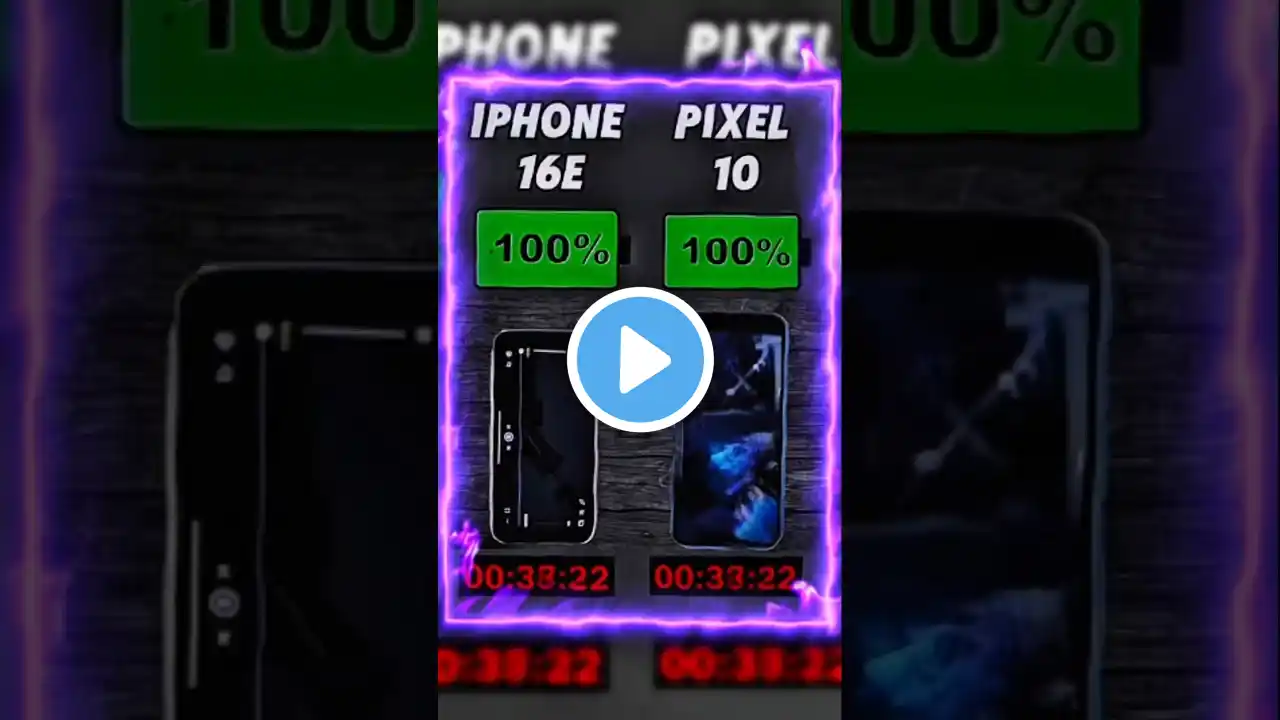
The ultimate battery drain showdown: iPhone 17 vs. Pixel 10 Pro. Who will last?#shorts #apple
🔋 THE BATTERY BATTLE IS ON! 🔋 In this definitive test, we pit two of the most anticipated flagships of the year against each other: the Apple iPhone 17 and the Google Pixel 10 Pro. We're going beyond the spec sheet to answer the question that matters most in your daily life: Which phone will actually last longer on a single charge? We've locked both phones into our controlled lab environment and are running them through an identical, grueling routine designed to simulate a heavy day of use. This isn't just a screen-on time test; it's a real-world simulation to see which software and hardware optimization truly reigns supreme. 🏃♂️ THE TEST PROTOCOL: · Equal Starting Conditions: Both phones charged to 100%, identical screen brightness (200 nits), connected to the same Wi-Fi network, and all background apps refreshed. · The Gauntlet: Our custom script runs a continuous cycle of: · Video Streaming (4K HDR) · Intensive Gaming (Graphically demanding title) · Social Media Scrolling (Instagram, TikTok) · Camera Usage (15-minute recording session) · Standby Time (To test idle drain) 📊 WHAT WE'RE MEASURING: · Primary Metric: Time from 100% to 0%. · Drain Rate: Percentage drop per hour during each activity. · Standby Efficiency: Which OS is better at saving power when you're not actively using it? · The "Real-World" Winner: Which phone would you actually feel more confident taking off the charger in the morning? 🤔 THE CORE QUESTION: Will the iPhone 17's legendary hardware-software integration and new efficiency cores maintain Apple's battery crown?Or will the Pixel 10 Pro's rumored larger cell, next-gen Tensor G5 chip, and Android's advanced adaptive battery features pull off an upset? ⏰ TIMESTAMPS: 0:00- The Rivalry 1:30- Phone Specs & Test Setup 3:15- The Drain Test Begins! 5:45- Gaming Drain Comparison 8:10- Video Streaming Test 10:30- Standby Drain Analysis 12:00- The Final Percentage & Winner Revealed! 13:15- Final Conclusions & Real-World Takeaways #iPhone17 #Pixel10Pro #BatteryTest #BatteryDrain #TechShowdown #Apple #Google #iPhone #Pixel #FlagshipSmackdown --- Subscribe for more head-to-head tech battles and in-depth reviews! Let us know in the comments which phone you think will win before watching! --- Option 2: Concise & Punchy (Ideal for Social Media/Shorts Description) iPhone 17 vs. Pixel 10 Pro: Battery Drained. ⚡ We ran both flagships through an identical intensive test (gaming, streaming, camera) until one died. No specs, no rumors—just raw results. The Question: Is Apple's efficiency still unbeatable, or has Google finally closed the gap? Watch to see: · Which phone drains faster during gaming? · Which has better standby time? · The final runtime winner! The results might surprise you. Drop a comment with your guess! #BatteryTest #iPhone17 #Pixel10Pro #Tech #Shorts --- Option 3: Neutral & Analytical (Ideal for a Tech Blog) Comparative Analysis: iPhone 17 vs. Google Pixel 10 Pro Battery Drain Speed Test Objective: To quantitatively compare the battery drain rates of the Apple iPhone 17 and Google Pixel 10 Pro under controlled, identical conditions to determine relative battery endurance. Methodology: · Devices were calibrated and fully charged to 100%. · Ambient temperature maintained at 22°C (±1°C). · Screen brightness normalized to 200 nits on both devices. · A standardized automated script executed a continuous loop of common tasks: 4K video playback, GPU-intensive gaming, social media application usage, and camera video recording. · Battery percentage was logged at 5-minute intervals. Key Metrics: · Total battery lifespan (minutes). · Drain rate (% per hour) for each discrete task. · Standby power consumption over a 2-hour period. Conclusion: This test provides a direct, data-driven comparison of the power management and efficiency of the two competing flagship systems-on-a-chip (Apple A-series vs. Google Tensor) and their respective operating systems (iOS vs. Android). The results offer consumers a clear expectation of performance for intensive, real-world usage scenarios.










